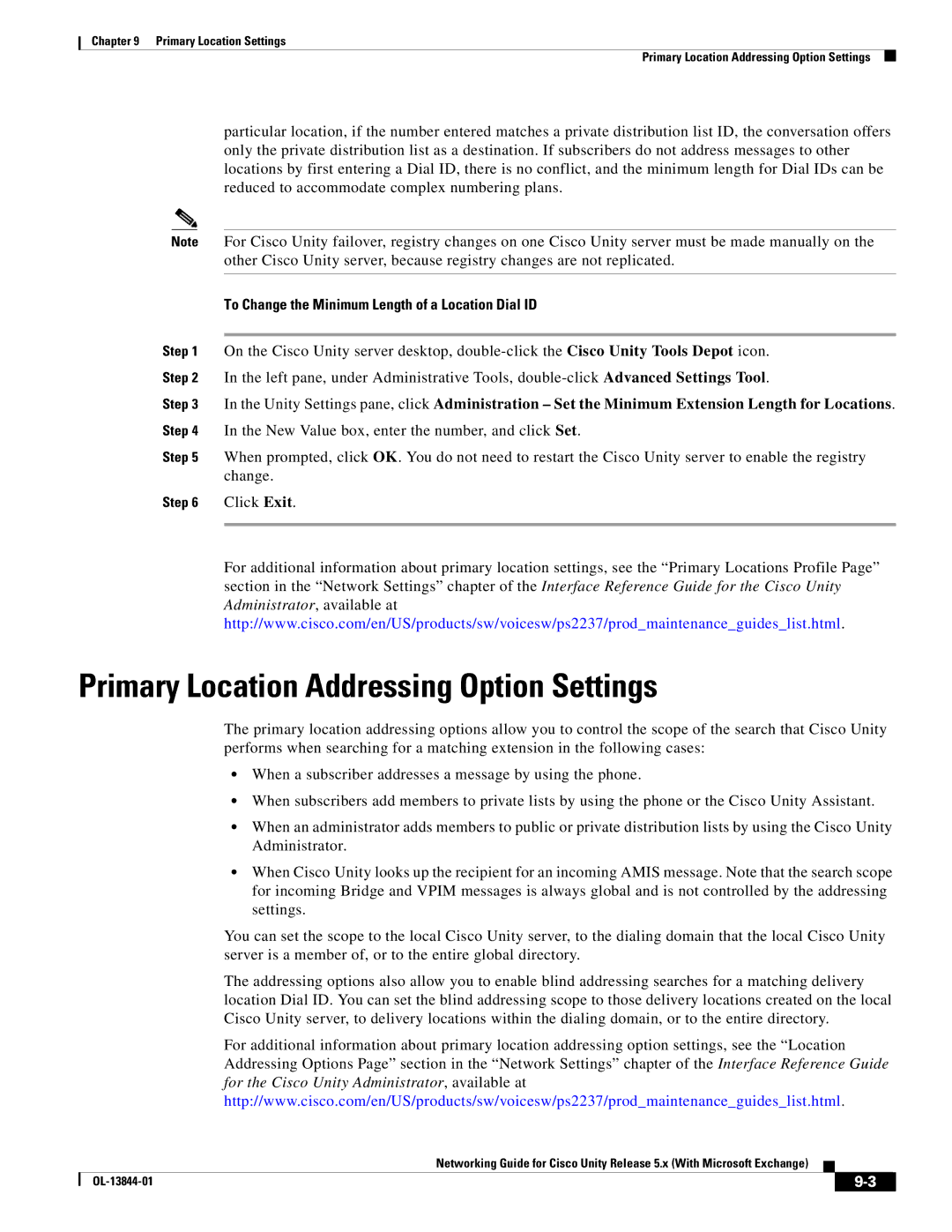
Chapter 9 Primary Location Settings
Primary Location Addressing Option Settings
particular location, if the number entered matches a private distribution list ID, the conversation offers only the private distribution list as a destination. If subscribers do not address messages to other locations by first entering a Dial ID, there is no conflict, and the minimum length for Dial IDs can be reduced to accommodate complex numbering plans.
Note For Cisco Unity failover, registry changes on one Cisco Unity server must be made manually on the other Cisco Unity server, because registry changes are not replicated.
To Change the Minimum Length of a Location Dial ID
Step 1 On the Cisco Unity server desktop,
Step 2 In the left pane, under Administrative Tools,
Step 3 In the Unity Settings pane, click Administration – Set the Minimum Extension Length for Locations. Step 4 In the New Value box, enter the number, and click Set.
Step 5 When prompted, click OK. You do not need to restart the Cisco Unity server to enable the registry change.
Step 6 Click Exit.
For additional information about primary location settings, see the “Primary Locations Profile Page” section in the “Network Settings” chapter of the Interface Reference Guide for the Cisco Unity Administrator, available at http://www.cisco.com/en/US/products/sw/voicesw/ps2237/prod_maintenance_guides_list.html.
Primary Location Addressing Option Settings
The primary location addressing options allow you to control the scope of the search that Cisco Unity performs when searching for a matching extension in the following cases:
•When a subscriber addresses a message by using the phone.
•When subscribers add members to private lists by using the phone or the Cisco Unity Assistant.
•When an administrator adds members to public or private distribution lists by using the Cisco Unity Administrator.
•When Cisco Unity looks up the recipient for an incoming AMIS message. Note that the search scope for incoming Bridge and VPIM messages is always global and is not controlled by the addressing settings.
You can set the scope to the local Cisco Unity server, to the dialing domain that the local Cisco Unity server is a member of, or to the entire global directory.
The addressing options also allow you to enable blind addressing searches for a matching delivery location Dial ID. You can set the blind addressing scope to those delivery locations created on the local Cisco Unity server, to delivery locations within the dialing domain, or to the entire directory.
For additional information about primary location addressing option settings, see the “Location Addressing Options Page” section in the “Network Settings” chapter of the Interface Reference Guide for the Cisco Unity Administrator, available at http://www.cisco.com/en/US/products/sw/voicesw/ps2237/prod_maintenance_guides_list.html.
Networking Guide for Cisco Unity Release 5.x (With Microsoft Exchange)
|
|
| |
|
|
